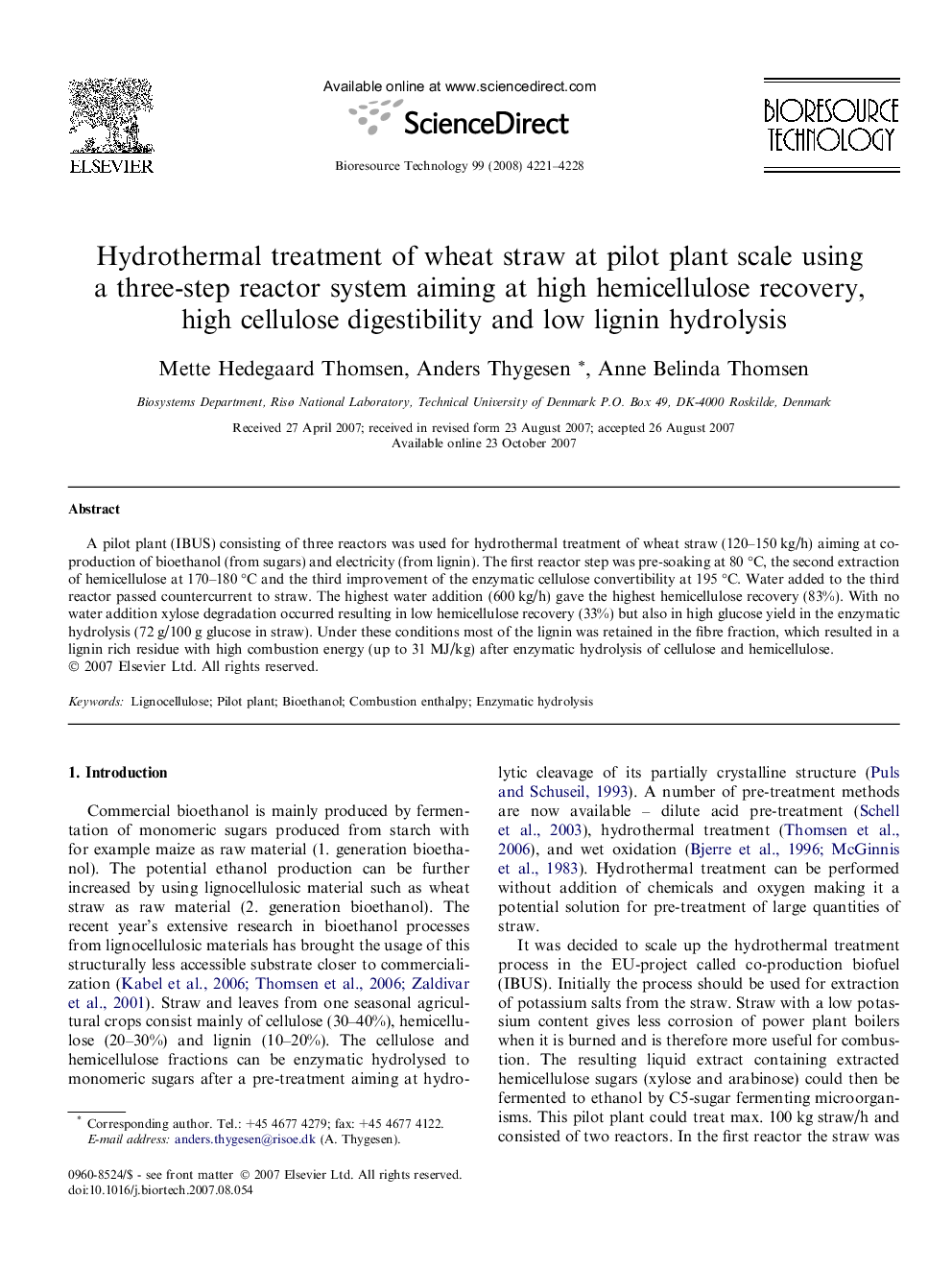| Article ID | Journal | Published Year | Pages | File Type |
|---|---|---|---|---|
| 684366 | Bioresource Technology | 2008 | 8 Pages |
A pilot plant (IBUS) consisting of three reactors was used for hydrothermal treatment of wheat straw (120–150 kg/h) aiming at co-production of bioethanol (from sugars) and electricity (from lignin). The first reactor step was pre-soaking at 80 °C, the second extraction of hemicellulose at 170–180 °C and the third improvement of the enzymatic cellulose convertibility at 195 °C. Water added to the third reactor passed countercurrent to straw. The highest water addition (600 kg/h) gave the highest hemicellulose recovery (83%). With no water addition xylose degradation occurred resulting in low hemicellulose recovery (33%) but also in high glucose yield in the enzymatic hydrolysis (72 g/100 g glucose in straw). Under these conditions most of the lignin was retained in the fibre fraction, which resulted in a lignin rich residue with high combustion energy (up to 31 MJ/kg) after enzymatic hydrolysis of cellulose and hemicellulose.
